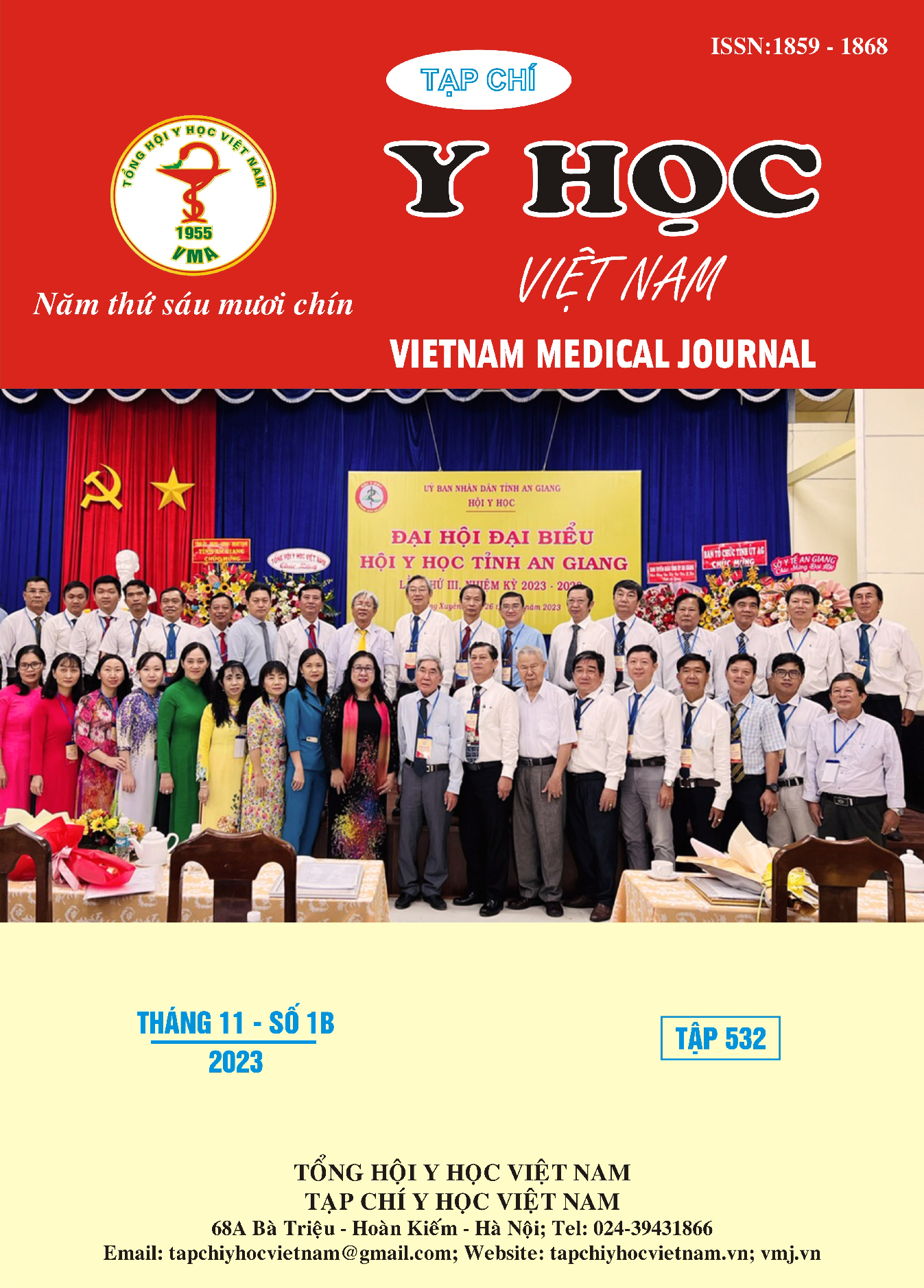OUTCOMES OF KIDNEY STONE TREATMENT USING FLEXIBLE URETERORENOSCOPES AT DUC GIANG GENERAL HOSPITAL
Main Article Content
Abstract
Objective: To assess the initial outcomes of kidney stone treatment using flexible ureterorenoscopes at Duc Giang General Hospital.Patients and Method: This study involved clinical descriptions, retrospective data collection, and prospective evaluations of 41 patients diagnosed with kidney stones who were indicated for endoscopic lithotripsy using a soft tube at Duc Giang General Hospital from November 2019 to September 2021. The study variables included general characteristics (age, gender, reason for admission, internal medical history, history of renal interventions, preoperative urine culture and sensitivity, degree of hydronephrosis, number and location of stones, stone size, preoperative JJ stent placement), treatment outcomes (average lithotripsy time, average hospital stay duration, stone-free rate on postoperative X-ray after 1 day, postoperative course, one-month follow-up results). Results: The male-to-female ratio was 58.5/48.5, with the majority of patients being over 41 years old. The average age was 51.02 ± 13.62 (ranging from 17 to 75 years), and the female-to-male ratio was 1.41. Most patients sought medical attention due to lower back pain caused by obstructing stones (65.9%). There were 8 cases that underwent re-examination after retrograde ureteral lithotripsy (19.5%), 4 cases detected kidney stones during health check-ups (9.8%), and one case was found after percutaneous lithotripsy (2.4%). Among patients with preoperative positive urine cultures, 3 out of 18 cases were positive (16.7%). Most cases had mild hydronephrosis (no hydronephrosis or grade 1 hydronephrosis), accounting for 58.5%. The average number of stones was 1.7±1.17. The average size was 16±4.89 mm (ranging from 8 to 25 mm). The group with stones below 20 mm accounted for 80.5%, with pure renal pelvic stones being the most prevalent (36.6%). Stone-free results after one month were achieved in 80.5% of cases. No intraoperative complications were encountered. 40 out of 41 cases achieved stone access (97.6%). The average hospital stay duration was 5.67±1.37 days. Conclusion: Kidney stone treatment using the soft tube lithotripsy method at Duc Giang General Hospital is a safe procedure with short postoperative recovery time, high stone clearance rate, and favorable clinical outcomes.
Article Details
Keywords
retrograde flexible ureteroscopy, kidney stone…
References
2. Phan Trường Bảo (2016), Đánh giá vai trò nội sọi ống mềm trong điều trị sỏi thận, Luận văn Tiến sỹ Y học, Đại học Y Dược TP Hồ Chí Minh .
3. Assimos D., Krambeck A., Miller N. L., et al. (2016). Surgical management of stones: American urological association/endourological society guideline. American Urological Association, 1-50.
4. Wendt-Nordahl G., Mut T., Krombach P, et al. (2011). Do new generation flexible ureterorenoscopes offer a higher treatment success than their predecessors?. Urological Research,39: 185-188.
5. Traxer O., Thomas A. (2013). Prospective evaluation and classification of ureteral wall injuries resulting from insertion of a ureteral access sheath during retrograde intrarenal surgery. The Journal of Urology, 189: 580-584.
6. Elbir F., Başıbüyük İ., Topaktaş R, et al. (2015). Flexible ureterorenoscopy results: Analysis of 279 cases. Turkish Journal of Urology, 41(3): 113-118.
7. Miernik A, Wilhelm K, Ardelt PU, Adams F, Kuehhas FE, Schoenthaler M (2012), Standardized flexible ureteroscopic technique to improve stonefree rates, Urology by Elsevier Inc, 80: 1198-1202.
8. Schoenthaler M., Wilhelm K., Katzenwadel A., et al. (2012). Retrograde intrarenal surgery in treatment of nephrolithiasis: Is a 100% stone-free rate achievable?. Journal of Endourology, 26(5): 489-493.


